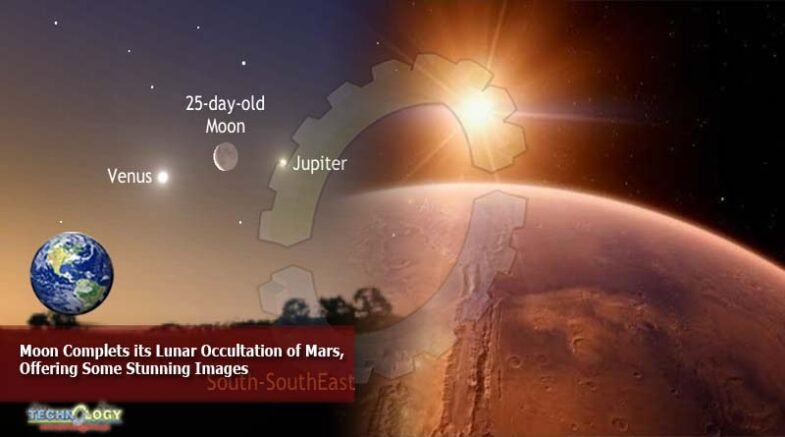THE MOON has completed its lunar occultation of Mars, offering some stunning images in the process. The occultation of Mars provided some stunning images, especially one from Patricio Leon of Santiago, Chile.

Just after the Moon took its place in front of Mars, Mr. Leon snapped a stunning, high res image that shows both our lunar satellite and our galactic next-door neighbour in stunning detail.
Mr Leon told Space Weather: “I caught Mars emerging from behind the Moon’s southern hemisphere 25 minutes after being swallowed by the lunar disk.
“The seeing was bad and the Moon was only 16° high, but it was quite an experience.”
For the coming nights, Mars will be very easy to see.
The Red Planet is situated right next to the Moon in the sky for the time being, as with a Full Moon having just passed, the lunar satellite will get dimmer, making it easier to see Mars.
Mars is set to get even brighter in the sky as Earth and the Red Planet prepare for their closest approach for the next 15 years.
While astronomers will use the word “close” to describe the distance between the planets, the approach also illustrates just how vast space is.
On October 6, Mars will be ‘just’ 38.57 million miles (62.07 million km) away from us – the closest it will be until 2035.
To further highlight how massive the solar system is, by the time you finish this sentence, you will be 40 kilometres closer to Mars, according to Space Weather.
The gap between our two planets is shrinking by about eight kilometres per second.
Mars and Earth, like all planets in our solar system, have an elliptical orbit.
As a result, there is always a perihelion (closest point) and aphelion (farthest point) and the two planets are approaching their perihelion to one another.
Just a week later, on October 13 Mars will be in opposition, which is where Earth is in between the Sun and the Red Planet.
This helps to highlight the duo’s elliptical orbit, as if both of their orbits were perfectly circular, the two would be closest when Mars is in opposition.
Originally published by Express
